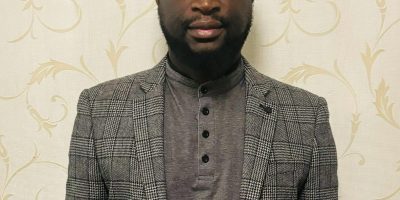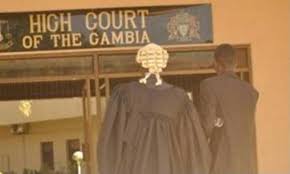By Dawda Faye
Defence Counsels Mene, Jallow and Fatty on the 8th April, 2019, attempted to discredit the 34thprosecution witness, Dr. Neidu, a forensic pathologist, in the case involving Yankuba Badjie and other former NIA officers before Justice Kumba Sillah-Camara of the High Court in Banjul.
Counsel Mene asked the witness whether it was correct that his duty as a forensic pathologist was to examine the body of a deceased who died suddenly in order to determine the cause of death. He answered in the positive. Asked whether it was also correct that the primary conclusion he reached was based on his examination of the deceased, he replied in the positive.
When he was asked whether he was in The Gambia on the 14th or 15th April, 2016, he said he was not, and that he was in his home country. He was asked the first time he visited The Gambia, and he stated that it was May or June, 2018. Asked whether it was correct that he did not have any personal knowledge of where the deceased died, he replied in the positive.
He was also told that it was correct that he did not witness torture of the deceased personally, and he answered in the affirmative. It was put to him that his examination of the remains of the deceased did not reveal any torture of the deceased. He responded in the positive. He was asked at what time he requested for circumstantial evidence, and he said it was before they reached the conclusion. Asked whether it was correct that part of the conclusion he reached in the course of examination of the deceased was contained in paragraph 23 at page 5 of his report. He answered in the positive, adding that he did not witness any physical assault of the deceased.
Counsel Jallow asked him whether he ever met Solo Sandeng, and in response, he replied in the negative. He was also asked whether he saw Solo Sandeng’s video prior to his incarceration at the NIA, and he said he was not sure whether the video he saw at the time was that of Solo Sandeng, adding that he never spoke to Solo Sandeng. He was asked how he knew that the photos he exhibited were Solo Sandeng’s. He said that verbal information was given to them, noting that at the conclusion of autopsy, and depending on the findings, he was given the video material to analyse .
He was asked whether it was professional to rely on information that he did not verify. He stated that he did not rely on any information that was not verified. It was put to him that the main issue for a pathologist was to determine the cause of death, and he replied in the positive. It was put to him that he reached conclusion based on information provided to him, and he said it was correct. He noted that what was left of the body were bones which did not show evidence.
It was also put to him that he was not sure that the bones and other tissues were Solo Sandeng’s, but he denied it. He was asked whether he was able to identify whose remains were those bones and tissues. He answered that they were that of Solo Sandng. Asked who identified the body, he said it was identified by superintendents who exhumed the body as well as three hospital morticians. He was further challenged that he could not be100% sure that the body showed to him was that of Solo Sandeng. He replied that biologically, it was never 100%.
Counsel Fatty asked him whether it was correct that he is not an anthropologist, and he said that he is a pathologist and he has knowledge and skill in doing basic anthropology work. Asked whether he relied on the draft of his examination, he stated that he did not because he was responsible for the autopsy along with his colleagues. He adduced that he identified the samples. He was asked whether the bones exhibited the cause of death during his examination. He responded in the negative.
It was put to him that it was correct that the bones were the primary materials available to him to know the cause of death. He replied that those were the only things left. Asked what scientific method he used to arrive at his conclusion, he adduced that no special scientific method was used during the examination on the video. It was again put to him that since the bones could not determine the cause of death, his report was not accurate. He revealed that the report was based on the autopsy and other evidence. “Looking at the bones alone did not show evidence of cause of death. Anything that can provide any medical evidence that can be used to determine the cause of death was used,” he told the court.
He was questioned whether he could use the injury of one person to determine the injury of another
person, and he said there was collaboration in context. “As a medical doctor, don’t you think that Solo Sandeng died naturally even though he might have been beaten?” Counsel Fatty wanted to know. The witness replied that Solo Sandeng was beaten to the extent that he made some observations on his remains.
It was put to him that his conclusion was based on presumption but he replied that observations were made and there was degree of confidence based on his report.


Ma sha Allah great and thanks for sharing